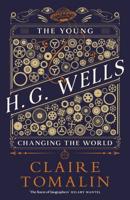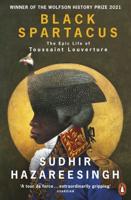Publisher's Synopsis
*Includes pictures
*Includes contemporary accounts
*Includes online resources and a bibliography for further reading
"Nothing in life is to be feared, it is only to be understood. Now is the time to understand more, so that we may fear less." - Marie Curie
The tens of millions who perished in the First World War - not to mention the horrendous turmoil that culminated in the outbreak of its successor - understandably marred the conception of the first decades of the 20th century. However, during that time, unparalleled minds from all over the globe unsnarled age-old mysteries and perfected prevailing theories, conjuring up wave after wave of breakthroughs that catapulted the world of science to unprecedented heights. Owing to this influx of novel ideas and innovative concepts, conferences had to be assembled to keep the relevant scientific spheres apprised of the latest advances. The formation of such conferences also allowed them to confront burning questions and investigate unexplored realms in their respective fields.
At first glance, the image, captured at the Solvay Conference in October of 1927, seems no different than any other generic staff or faculty photograph. Pictured are 3 rows of stern, sharply suited figures, the middle and front rows seated on a line of chairs a step apart, and the last row, left to stand upright, hovering behind them in their best distinguished poses. Only upon closer inspection and a proper gander at the faces of those pictured does it dawn on one that this is no ordinary photograph - far from it. Often hailed as the "most intelligent photograph of all time," it features 29 of the most illustrious scientists in the world, 17 of whom were freshly crowned, as well as future Nobel laureates.
The most familiar face is that of Albert Einstein, creator of the famous mass-energy equivalence formula (E=mc²) and the general theory of relativity. The 48-year-old had been presented with the Nobel Prize in Physics "for his services to theoretical physics, and especially for his discovery of the law of the photoelectric effect" 6 years prior. But in the picture near Einstein, seated two spaces to his left, is an older scientist with a solemn face lined with wisdom, framed by the wispy, snow-white flyaways of her characteristic loose bun. Her thin lips are somewhat pursed in a scowl, and there is an aura of confidence radiating from her, the lone woman amidst a pack of exalted, intimidating men. Her shoulders are relaxed, her legs are crossed under her plain black cloak, and her felt bowler hat rests casually against her lap. This is none other than Madame Marie Curie, who not only cracked the glass ceiling but completely shattered it.
Not surprisingly, early 20th century society, stunted by its narrow, patriarchal mindset, assailed her with double the toilsome trials and taxing tribulations, many of which were unique to her solely on account of her gender. Be that as it may, the tenacious pupil-turned-savant soldiered on through the discrimination and clambered over the often gratuitous stumbling blocks, ultimately cementing her place in history as one of the greatest scientists of all time.
Marie Curie: The Life and Legacy of the Legendary Scientist Who Became the First Woman to Win a Nobel Prize examines the career that made Madame Curie one of the world's most important figures. Along with pictures of important people, places, and events, you will learn about Marie Curie like never before.








